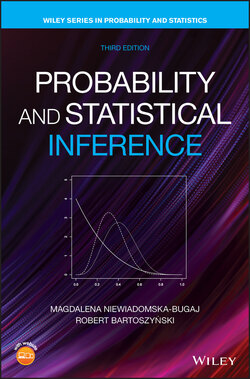Читать книгу Probability and Statistical Inference - Robert Bartoszynski - Страница 31
Example 1.14
ОглавлениеBased on Example 1.12, we know that the following two events are disjoint: “more heads than tails” and the intersection “the results alternate, ending with tails.”
Example 1.14 shows that to determine whether or not events are disjoint, it is not necessary to list the outcomes in both events and check whether there exist common outcomes. Apart from the fact that such listing is not feasible when sample spaces are large, it is often simpler to employ logical reasoning. In the case above, if the results alternate and end with tails, then the outcome must be THT. Since there are more tails than heads, does not occur.
The definitions of union and intersection can be extended to the case of a finite and even infinite number of events (to be discussed in the Section 1.4). Thus,
(1.1)
is the event that contains the sample points belonging to or or …or . Consequently, (1.1) is the event “at least one occurs.” Similarly,
(1.2)
is the event that contains the sample points belonging to and and …and . Consequently, the event (1.2) is “all 's occur.”
